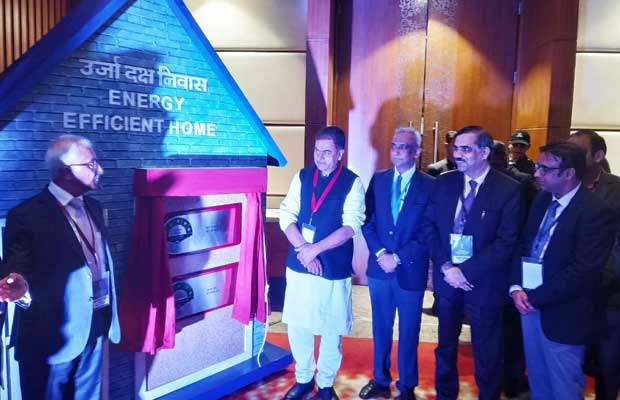

Towards a more efficient home
Union Power Minister R K Singh launched an energy efficiencyfor residential buildings in India at the conference of state ministers for power, new & renewable Energy of States & Union Territories yesterday.
This label was developed by Bureau of Energy Efficiency (BEE), under the aegis of the ministry of power energy efficiency label programme, for residential buildings. The idea is to provide information to consumers on the energy efficiency programme standard of the homes to be constructed across India.
During the launch of the event a schedule on implementation on energy efficiency label for residential buildings was distributed.
The objective of the labeling programme is to find a quick and easy way to evaluate the energy performance of a home which the government hopes will have an impact on pices too eventually.
Broadly termed as House Energy Rating Scheme (HERS in most parts of the world, energy efficiency at the household level makes a strong case for itself, with household consumption at about 25% of total electricity consumption. A figure that could actually rise with the success of the Saubhagya scheme for 100% coverage of households in the country with a power connection by March this year . The proposed labeling program is expected to save substantial amount of electricity through various energy efficiency efforts in houses nationwide. In a best case scenario, it could achieve an energy saving of up to 40 per cent over conventional houses with annual savings of 90 BU by 2030.
The BEE currently has a ratings system for 19 home appliances , built around a star system. Among notable moves made to push users towards efficient appliances is the recent move by the capital’s main power distributor, BSES , to team up with EESL and provide its customers 5 Star rated ACs at discounted prices, on the premise of bulk buying discounts. The discounts are in the range of 23 to 47%, according to the them.
Elsewhere, the experience with energy labeling for homes has had a mixed record, with no definitive evidence that prices improve with higher labeling. Many suggestions have been made in order to drive more consumers towards it, They have included the possibility of requiring energy labeling for a resale. Or financial benefits for upgrading homes.
Of course, you could do it on your own, to be more environmentally friendly or to save electricity. But based on the evidence so far, that seems to be a remote possibility unless there is a good economic case for it, with or without subsidies, as the case of solar adoption has demonstrated.
Interestingly, on a speculative aside, with the power sector facing deep financial issues, it doesn’t seem possible for consumers to see the benefits of lower rates in the near future. Thus, as rates creep up to pay for the horrendous inefficiencies and subsidised power for almost 100% of the population, more efficiency is your best bet to be green and avoid bill shock too.
The Uttar Pradesh capital city of Lucknow will soon see the construction of a waste-to-energy…
In a major development, India Glycols Limited has increased its grain-based distillery capacity by an…
As Gorakhpur continues to take strides in biofuel generation in the country, Uttar Pradesh Chief…
Just as the quest for green energy generation is gaining momentum in the country, Refex…
The first unit of the Compressed Biogas Plant built by Reliance at the Peddapuram Industrial…
As Karnataka gains momentum in the direction of ‘waste to energy,’ the Mysuru City Corporation…